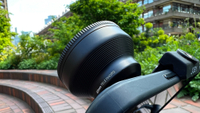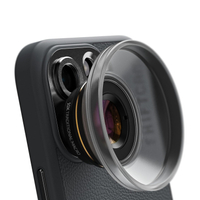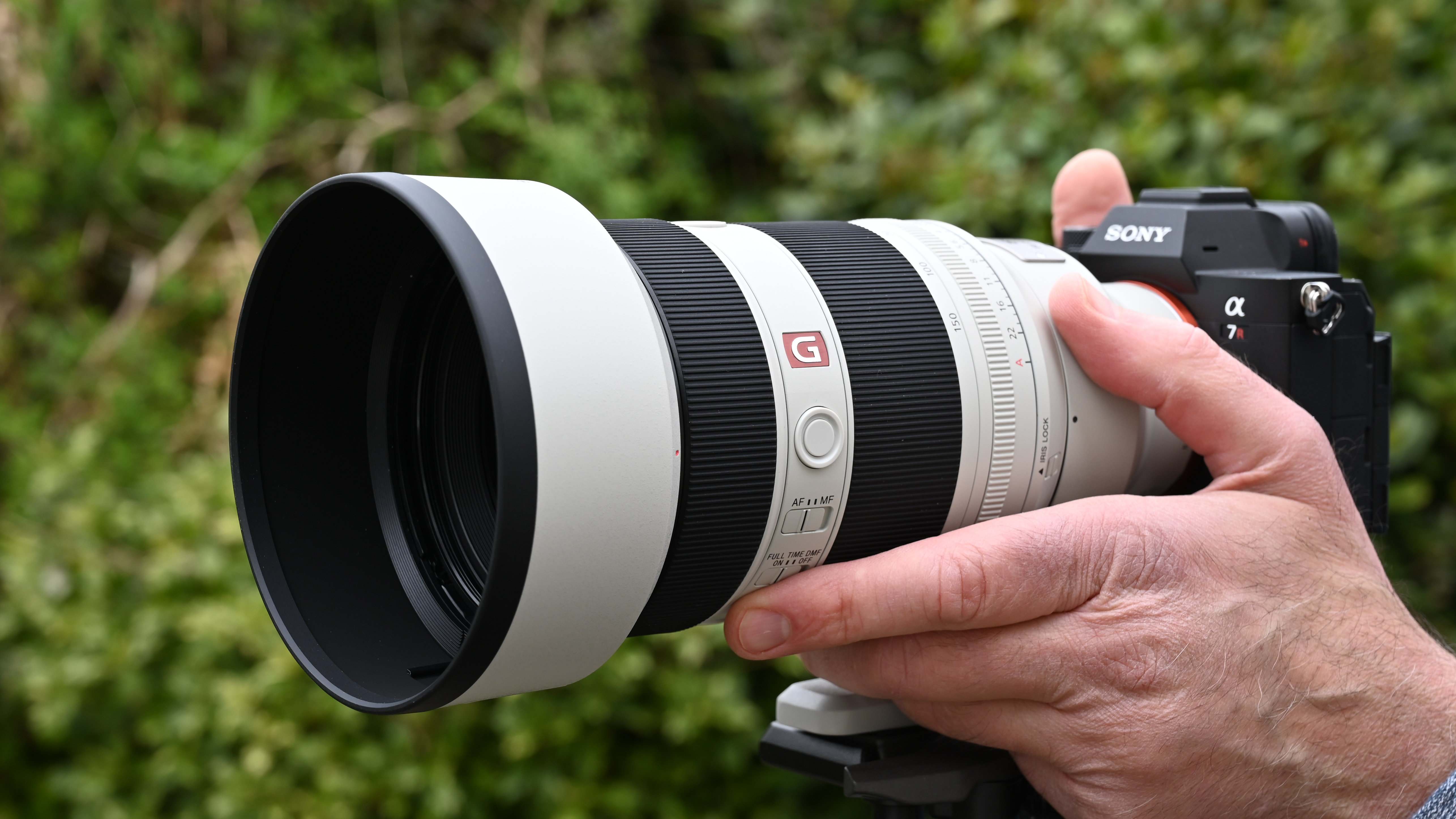Digital Camera World Verdict
The star of this budget 2-in-1 lens kit is undoubtedly the 12.5x macro lens, as it enables you to capture an impressionistic background bokeh that would make Monet proud! The super wide angle lens could prove useful to owners of older smartphones with limited wide angle ranges (or if you want to add deliberate barrel distortion effects to your clips for a bit of character.) The main downside to using the kit with an iPhone 16 was having to place a small object between the Apexel’s clip mount and the iPhone body to get it them to align correctly, but all in all this is a worthy addition to your smartphone kit bag given its low price (and the excellent macro lens).
Pros
- +
Better bokeh
- +
Universal clip mount
- +
2 lenses in one kit
Cons
- -
Edge of the lens hood can get in shot
- -
Some smartphones have a wider angle lens-
Why you can trust Digital Camera World
When it comes to photography these days, I’m primarily an iPhone user, though I have a long history of writing about Canon photography for PhotoPlus magazine and Nikon photography for NPhoto Magazine. One of the main attractions for using an iPhone 16 Pro is that I can change lenses in a tap (or a swipe of the Camera Control button), quickly summoning a 13mm lens for wide-angle shots or a 120mm lens for a telephoto opportunity. The iPhone’s ultra-wide 0.5x lens can also be used to capture macro subjects (such as bees pollinating a flower) while creating a soft and abstract background bokeh. Although I’m impressed with the multiple cameras in built into my iPhone, I’m always interested in the opportunity to expand their scope using third-party lenses such as the Apexel Wide Angle & Macro Lens Kit.
Apexel is a Chinese-based company that designs and manufactures a wide range of smartphone lens kits. For example, the Apexel PhoneMicro5 Microscope Kit enables you to delve deeper than a typical macro lens to photograph microscopic textures and details. The Apexel 36x Telephoto lens conjures up a more cinematic look by compressing the distance between far and close subjects, which is great for smartphone movie makers. I was therefore keen to see how the Apexel Wide Angle & Macro Lens Kit might expand my smartphone photography.
The concept of a third-party lens kit being able to capture both wide-angle and macro shots was intriguing, given that the specifications between the lenses are so far apart - a 0.45x super wide angle and a 12.5x macro! So, does this kit deserve a place as one of the best lenses for iPhone and Android phones? Read on to find out.
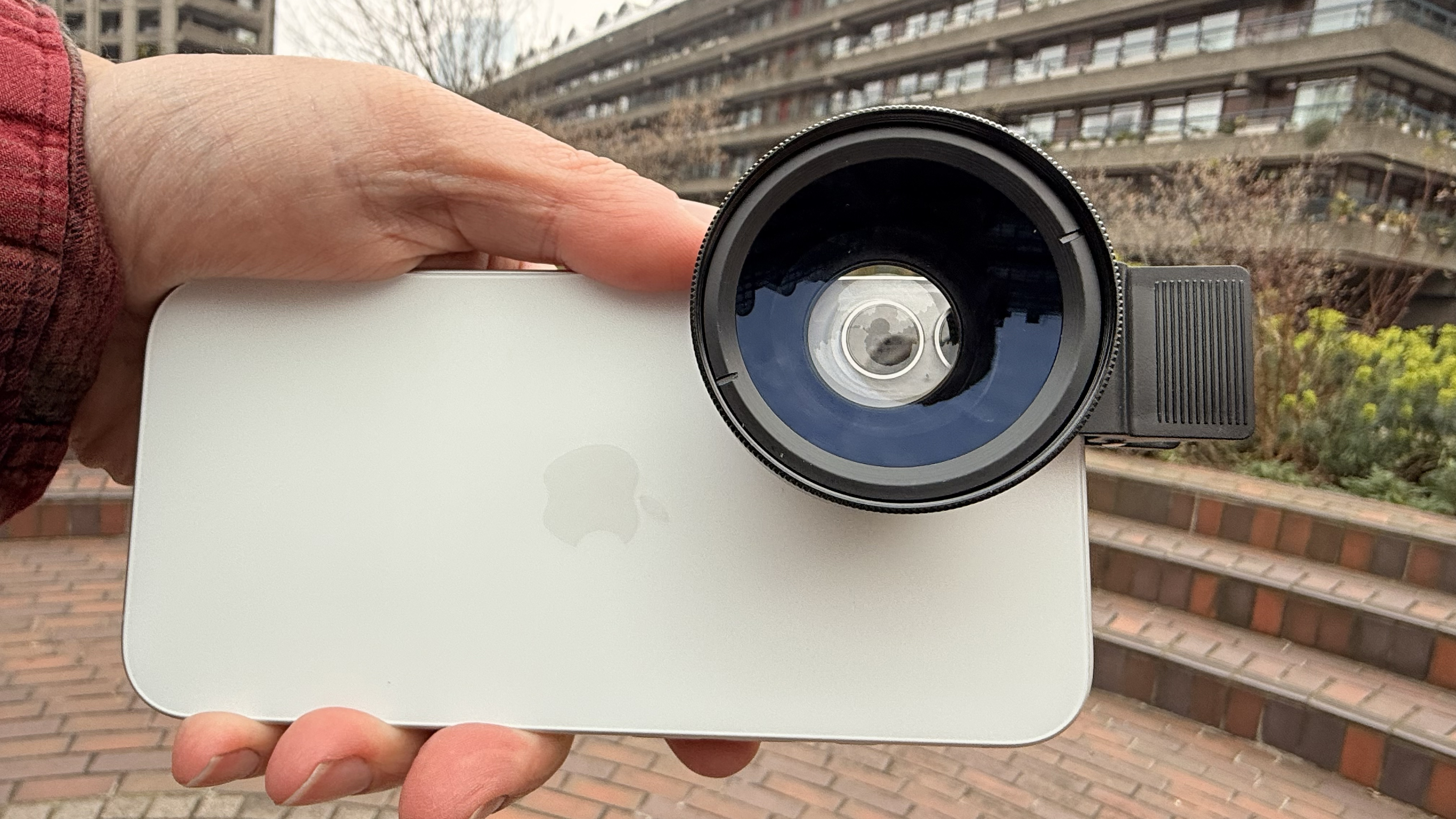
Apexel 2-in-1 Clip-on Lens: Specifications
Lens Type | 0.45x (140º) Wide Angle, 12.4x (37mm) Macro |
Macro shooting distance | 3 to 6 cm |
Compatible Mountings | Compatible with most smartphones including iPhone and Samsung |
Product Dimensions | 4.7 x 3 x 2 inches |
Weight | 5 ounces |
Apexel 2-in-1 Clip-on Lens: Price
The Apexel Wide Angle & Macro Lens Kit retails at $26.99 / £24.99 / AU$55.95 on Amazon. Your first thought may be ‘you get what you pay for’ and this is true to a degree. However, despite its low price, I can’t dismiss the Apexel Wide Angle & Macro lens kit. Its wide angle lens may not be able to compete with the Ultra Wide lenses on the latest and most expensive smartphones (such as the iPhone 16) but Apexel’s macro lens does capture a better bokeh than my iPhone 16, so the kit is still worth considering for the Macro lens alone at such a cheap price.
Apexel 2-in-1 Clip-on Lens: Design & Handling
The Apexel Wide Angle & Macro Lens Kit consists of a 0.45x super wide-angle lens and a 12.5x macro. On unboxing the kit I was surprised to see that the wide angle lens was attached (by a screw thread) to the macro lens which was built into a black plastic clip. You can use the wide-angle lens while it is threaded to the macro lens, but you need to unscrew and remove the wide-angle lens when you want to shoot a macro subject. The tiny instruction sheet taught me that. Oh, the box also contains a small black faux leather drawstring bag to transport the 2-in-1 kit, plus a handy mini glasses cloth to keep the lenses clean.
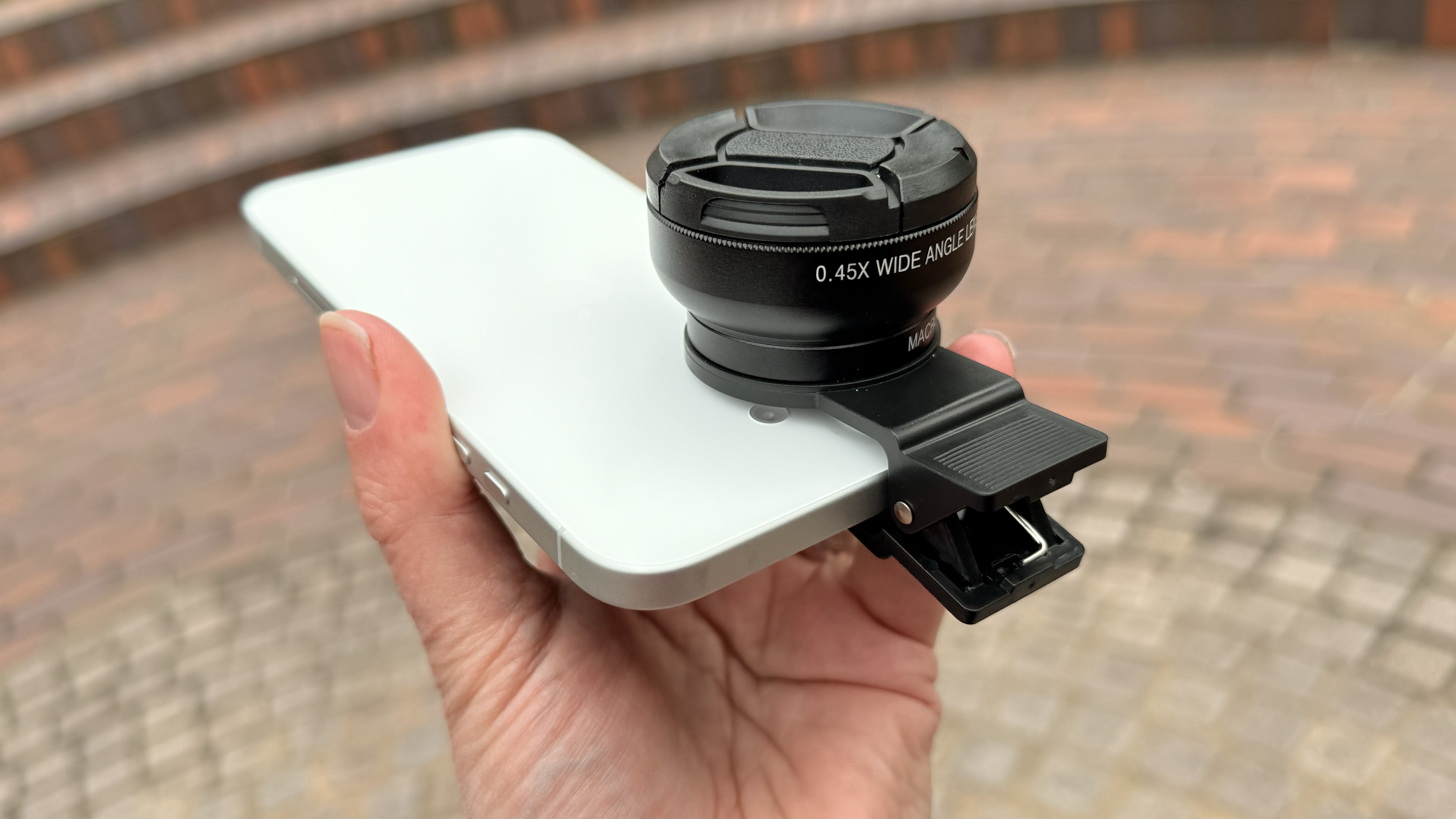
This plastic clip attached to the macro lens is a universal smartphone mount that operates like a clothes peg. Apply pressure to open the clip’s spring grip, slide it over the width of your smartphone’s body, and slide it so that the stacked wide-angle and macro lenses overlap the main camera on your smartphone. The spring in the clip then holds the lenses in place. It sounds like a simple mechanism to use, but I did encounter (and eventually solve) a couple of problems in relation to aligning the lenses with my smartphone.
The Apexel Wide Angle & Macro Lens Kit’s spring clip mount is less sophisticated than the universal grip mount that ships with the Apexel 3 in 1 Smartphone Microscope Kit. With the latter’s more expensive mount, you can slide the lens thread hole vertically and horizontally until it perfectly overlaps the smartphone’s main lens. The cheaper Wide Angle & Macro Lens Kit’s plastic clip is harder to align. I couldn’t get it to overlap my iPhone 16 Pro’s main camera due to that model’s three-lens configuration.
Fortunately, Apple had also lent me an iPhone 16 with a two-lens layout, so I was able to use the Apexel spring clip to get its stacked wide-angle and macro lens to overlap the iPhone 16’s main lens and start my test shoot. I thought this would be a quick and easy gadget to test (compared to a gimbal with mechanical parts), but it turned out to be more of a challenge than I expected.
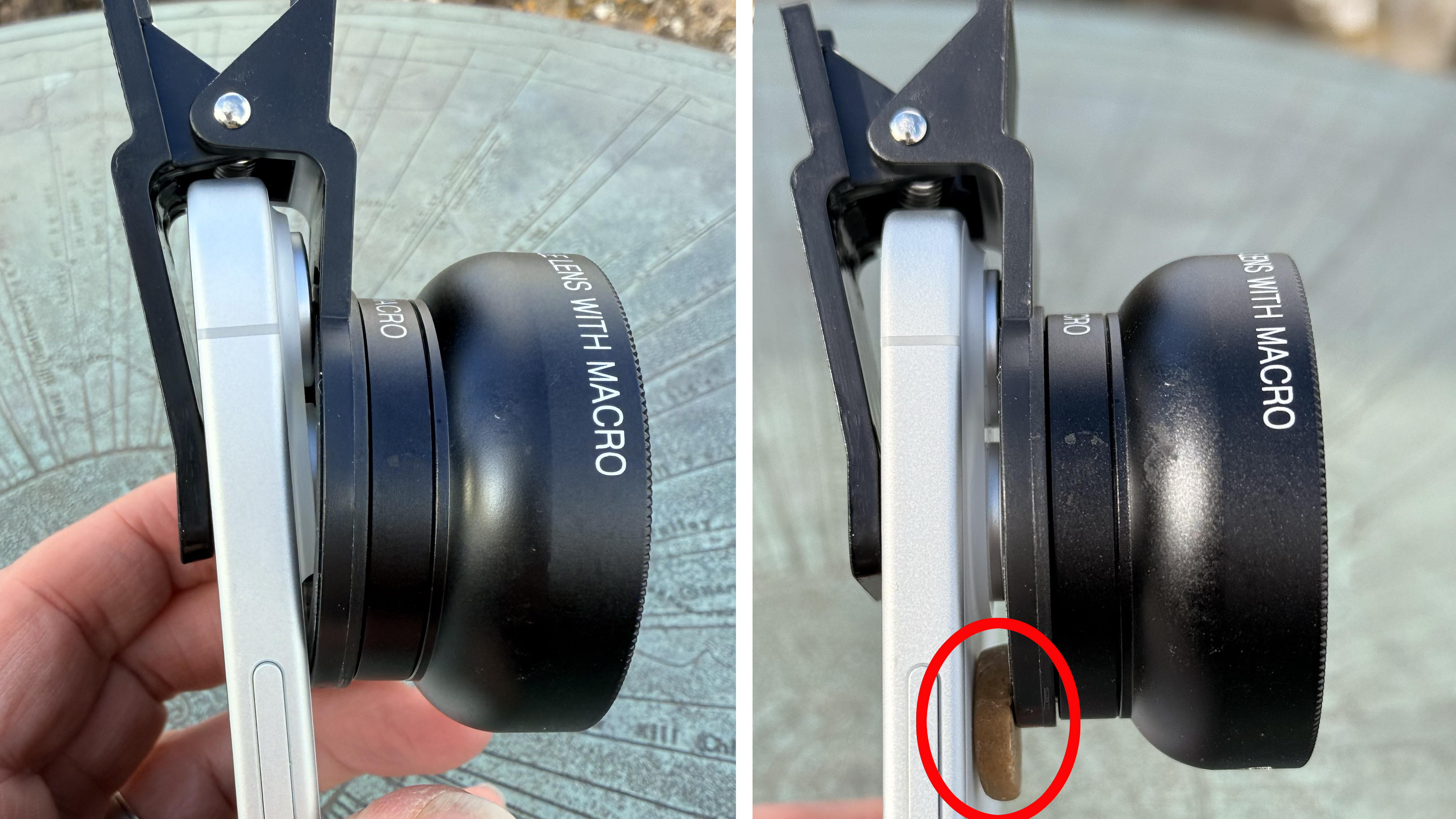
Apexel 2-in-1 Clip-on Lens: Performance
I took the Apexel Wide Angle & Macro Lens Kit to London for my first test shoot. I figured that the city’s architecture would be a fitting subject for testing the wide-angle component of the kit. However, after clipping the lenses onto my iPhone 16 and starting to snap some test shots, I noticed that the black edge of the wide-angle lens hood appeared around the border of the frame, despite my iPhone 16’s camera being placed directly in the centre of the lens. These heavily vignetted edges would need a fair bit of cropping to get a clean composition. If I tried to slide the clip to minimise the presence of the lens, then the edges of the frame became blurred. I figured that the wide-angle component of the 2-in-1 kit was going to lose it a couple of stars!
On my second test shoot in Scotland, I made a couple of important discoveries that improved the results captured by the Apexel wide-angle lens. When the kit was clipped to my iPhone 16, the third-party Apexel lens was slanted at a slight angle to my iPhone’s lens (due to the way the iPhone’s two lenses extrude from the body of the phone). Perhaps this was causing the heavy vignetting!?
I realised that I needed to create a wider gap between the kit’s rubber clip and my smartphone’s lens. By placing a thin lozenge-shaped sweet (a Fisherman’s Friend) between the edge of the Apexel’s plastic clip and the body of my iPhone 16, I was able to get the Apexel’s lens running perfectly parallel with my iPhone’s lens.
This impromptu hack dramatically reduced the unwanted vignetting and gave me much better wide-angle shots of Scottish landmarks such as castles and viaducts (and it also rescued the kit from a low star rating). Another huge tip (which is actually in the tiny manual that ships with the kit) is to shoot stills in a 16:9 aspect ratio. This crops the shot and hides the vignetted edges (which are very noticeable if you shoot in 4:3).
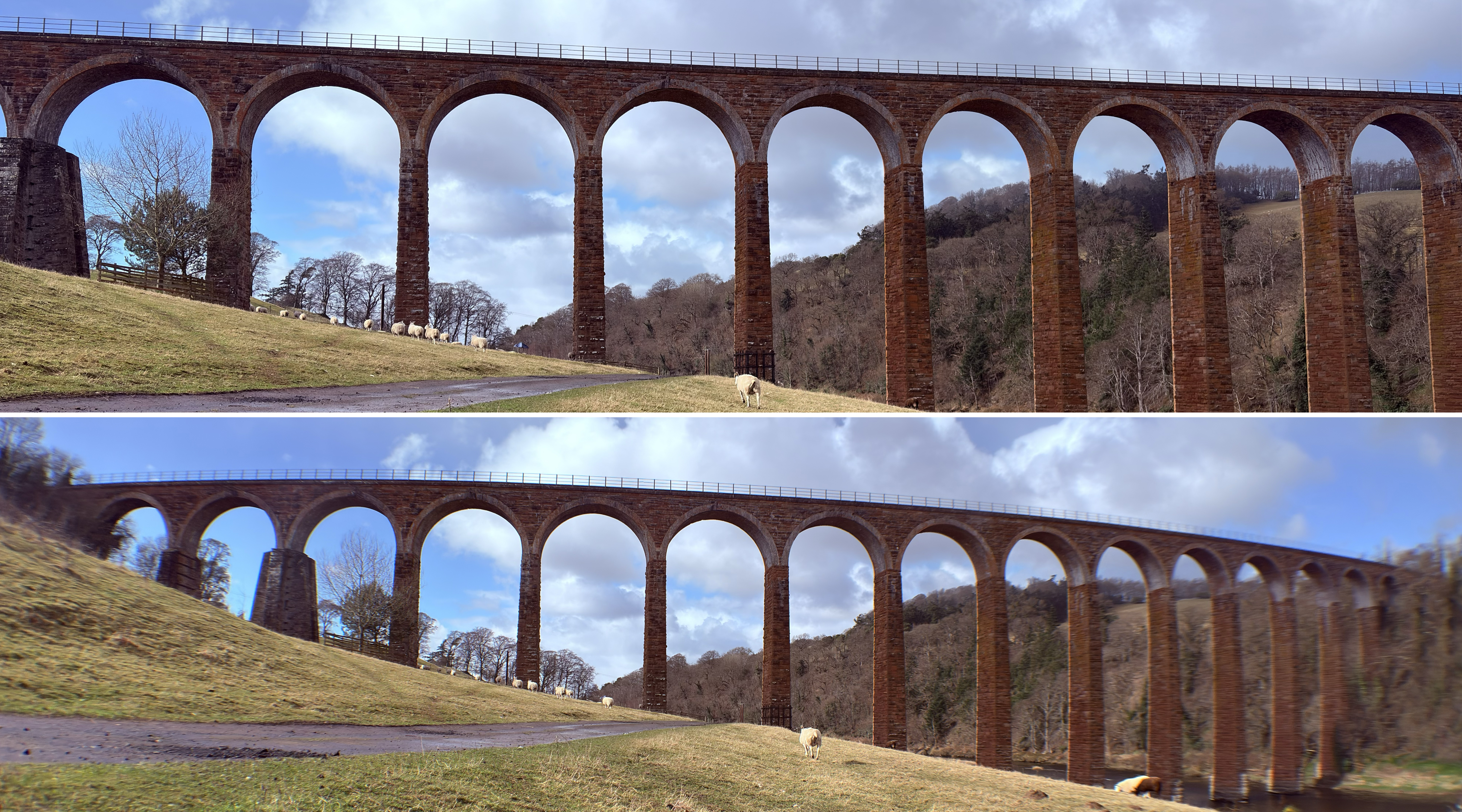
The wide-angle shots captured by the iPhone’s native .5x camera are wider than those captured by the Apexel 0.45x super wide-angle lens, so owners of older smartphone models will find the wide-angle component of the Apexel lens more useful than those owning higher-spec smartphones.
However, the Apexel wide-angle lens has more character. The iPhone counteracts the distortion captured by its own wide-angle lens, whereas with the Apexel lens, vertical lines in architecture shots barrel more dramatically, especially towards the edge of the frame. This striking barreling is even more noticeable when panning or tilting the iPhone to capture a wide-angle video clip.

To explore the results of the macro component of the 2-in-1 kit, I needed to unscrew the ultra-wide-angle lens and pop it safely into the drawstring bag. I was then able to place the macro lens a few centimetres (between 3 - 6cm) from a subject to capture a macro shot. After unclipping the mount, I was able to compare the Apexel bokeh with the background blur produced by the iPhone’s Macro mode. I was impressed by the background bokeh captured by the Apexel Macro Lens. The iPhone’s Macro Mode had a less impressive bokeh, with background objects looking sharper compared to the smoother and more abstract bokeh, but captured by the Apexel lens.
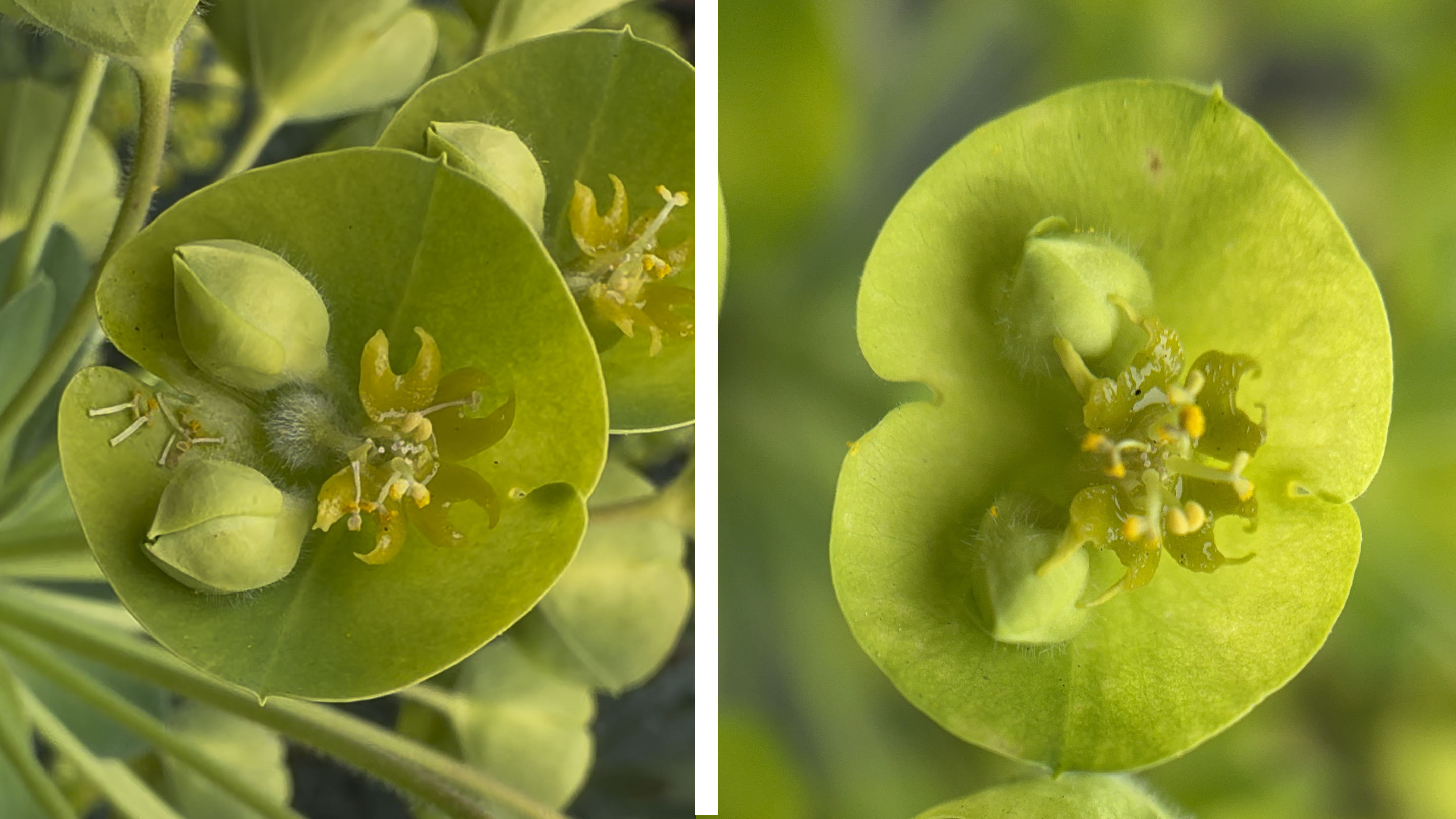
Apexel 2-in-1 Clip-on Lens: Verdict
Given the affordable price of this kit, it should appeal to smartphone photographers and videographers, even if their device can capture a wider field of view than the Apexel kit’s wide-angle lens. Using the Apexel kit’s wide-angle component, the vertical edges of architectural subjects barrel dramatically towards the edge of the frame, adding a retro cinematic look that’s ‘ironed out’ when using a smartphone’s native wide-angle lens. The barrel distortion produced by the Apexel wide-angle lens adds character to your footage. It may also enable owners of older smartphones to capture a wider field of view than those who have the latest iPhone model. It’s just a shame that in the case of the iPhone 16, I had to devise a way to get the Apexel wide-angle lens to run more parallel to the edge of my iPhone’s lens to reduce distortion and hide the presence of the lens hood at the edge of the frame. A thicker rubber pad on the edge of the clip would solve this design problem (and save me from wasting a Fisherman’s Friend each time I wanted to capture a wide-angle clip!)
The built-in 12.5x macro lens, on the other hand, is the surprise star of the Apexel 2-in-1 kit. The background blur captured by my iPhone 16’s x0.5 13mm lens was inferior to the bokeh captured via the Apexel lens. With the iPhone, I could still see detail in objects behind my subject, whereas when using the Apexel lens, the bokeh was far more blurred, leading to pleasing abstract colours and textures. Check out the supporting video to see an example.
Features ★★★★☆ |
A wide angle and macro lens built its to one clip on universal mount (plus a handy lens cap to protect the glass components). |
Design ★★★☆☆ |
You need to unscrew the wide angle to use the built-in macro and it’s hard to get the lenses running parallel with your smartphone lenses, leading to vignetting. |
Performance ★★★★☆ |
The wide angle len’s barreling edges add character to stills and clips, especially during tilts and pans. The macro component is marvellous. |
Value ★★★★★ |
For a two in one lens kit this is very affordable and the macro lens alone justifies the price. |
Alternatives
Shiftcam LensUltra 10x Traditional Macro Lens
The Apexel 12.5x macro lens featured in this review provides a low-budget solution to getting better macro shots. However, if you have more cash to spare, then the higher quality 10x Macro Lens from Shiftcam’s Lens Ultra Series is well worth considering due to its superior glass elements. You can also get closer to your subject with the Shiftcam (10-15mm) than you can with the Apexel (3-6cm), so the former gives you a closer encounter with macro subjects.
Shiftcam Long Range Macro
The problem with some macro lenses is that you need to get so close to a subject (such as an insect) that you might scare it away. The LensUltra series 75mm Long Range Macro lets you enjoy capturing close encounters (between 5-7cm) with moving subjects while producing a beautiful DSLR-style background bokeh with your smartphone.
George has been freelancing as a photo fixing and creative tutorial writer since 2002, working for award winning titles such as Digital Camera, PhotoPlus, N-Photo and Practical Photoshop. He's expert in communicating the ins and outs of Photoshop and Lightroom, as well as producing video production tutorials on Final Cut Pro and iMovie for magazines such as iCreate and Mac Format. He also produces regular and exclusive Photoshop CC tutorials for his YouTube channel.
You must confirm your public display name before commenting
Please logout and then login again, you will then be prompted to enter your display name.

